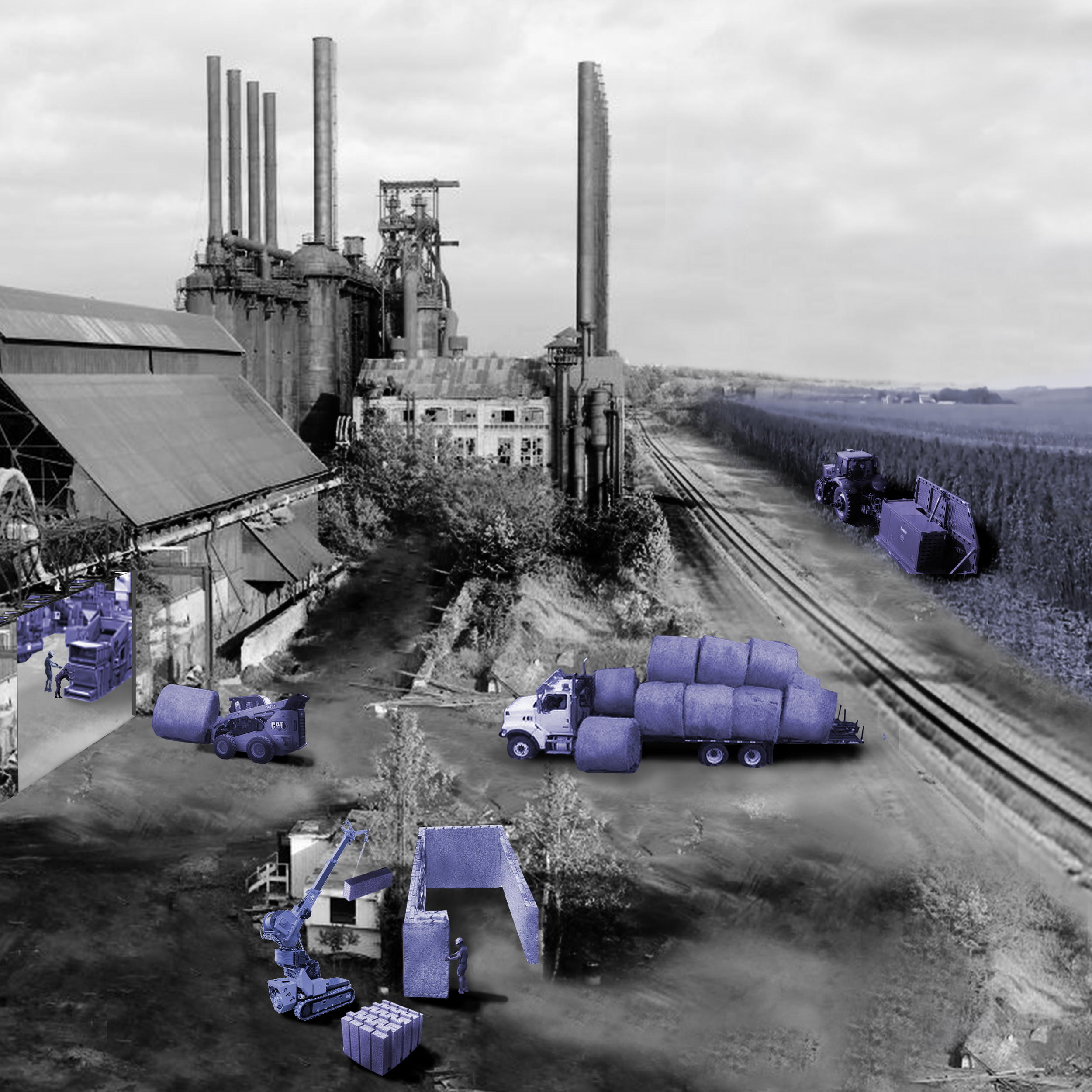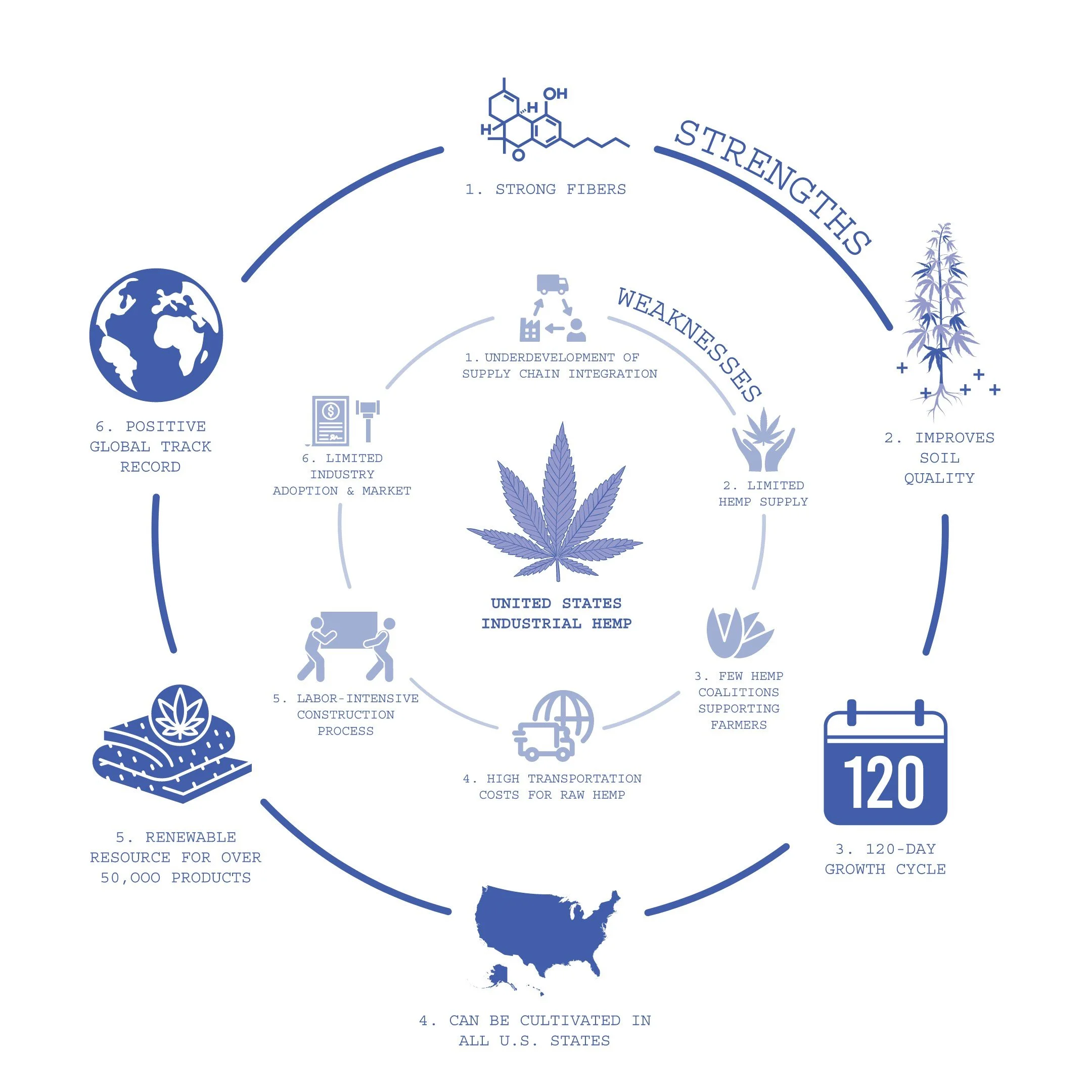
FROM SOIL TO STRUCTURE: Regenerating the Mahoning Valley with Hemp
School: Harvard GSD | Course: Regenerative Design | Semester: Spring 2025
The industrial hemp supply chain in the United States remains largely undeveloped, lacking the infrastructure needed to support large-scale cultivation, processing, and integration into construction. This gap presents an opportunity to reimagine how such a supply chain could be built from the ground up: locally, sustainably, and equitably. Building on this idea, the project focuses on transitioning Ohio’s Mahoning Valley from a legacy of industrial decline to a place-based circular economy. Focusing on the potential of hemp-based construction, particularly hempcrete, the project explores how bio-based materials can catalyze urban and ecological renewal while creating equitable labor opportunities. By linking material innovation with local cultivation and manufacturing, the project reframes supply chains not as extractive systems but as local interconnected networks.
Set in Youngstown, the proposal envisions an adaptive reuse strategy that activates the region’s agricultural and industrial assets. Hemp cultivation is introduced on farmland as a rotational crop in the surrounding rural landscape, while processing and fabrication are embedded within the city’s vacant steel warehouses. This re-spatialization of the hemp supply chain bridges rural and urban economies and forms the backbone of a regenerative design model. Through this approach, waste is minimized, carbon output is net-negative, and value is reinvested locally.
The project draws from the principles of regenerative urbanism, proposing a speculative framework where architecture, landscape, and industry are co-designed to support long-term environmental and economic resilience. The result is not just a construction methodology but a vision for how post-industrial cities like Youngstown can evolve through materials that embody care for place, for people, and for the future.




